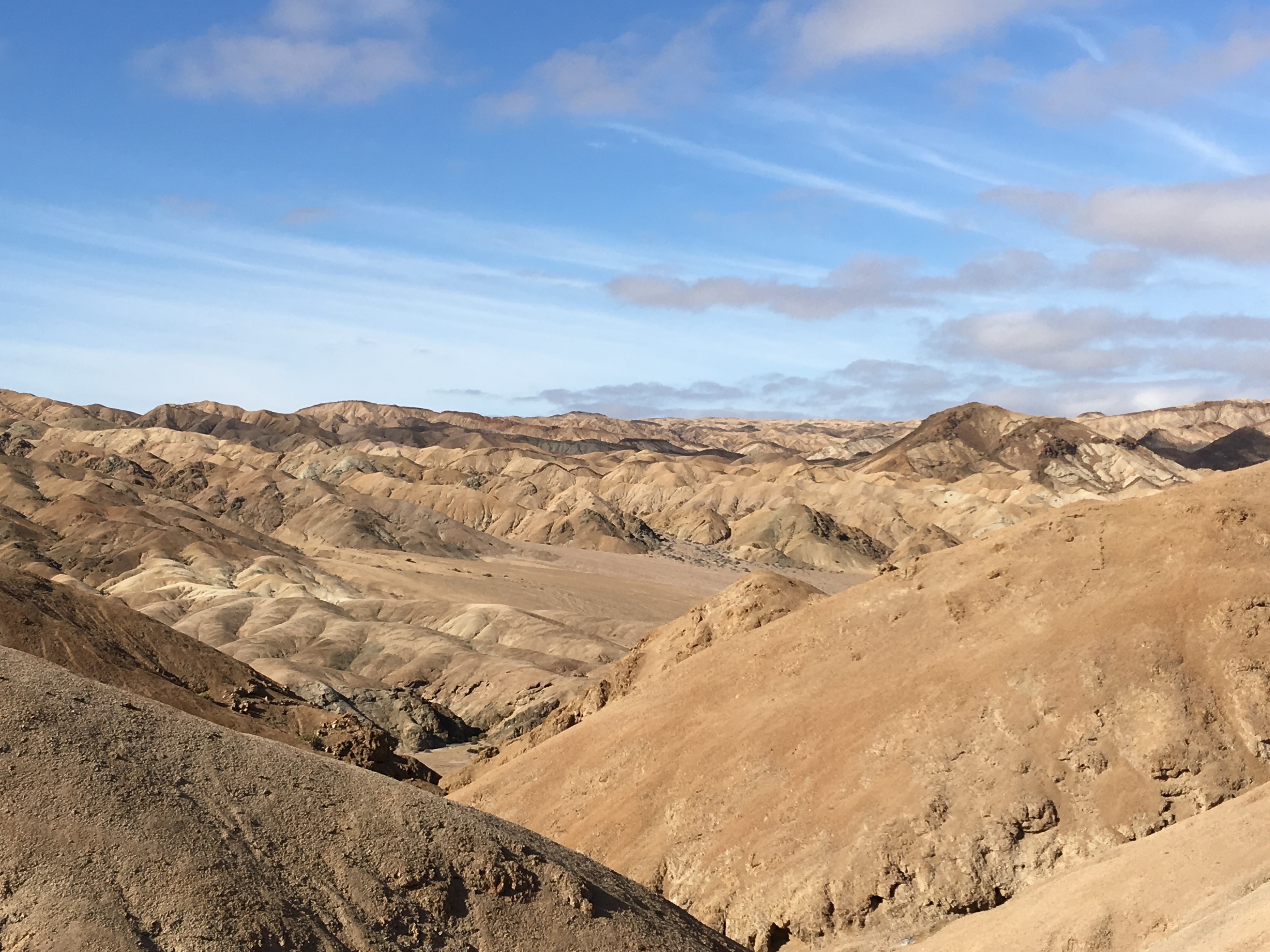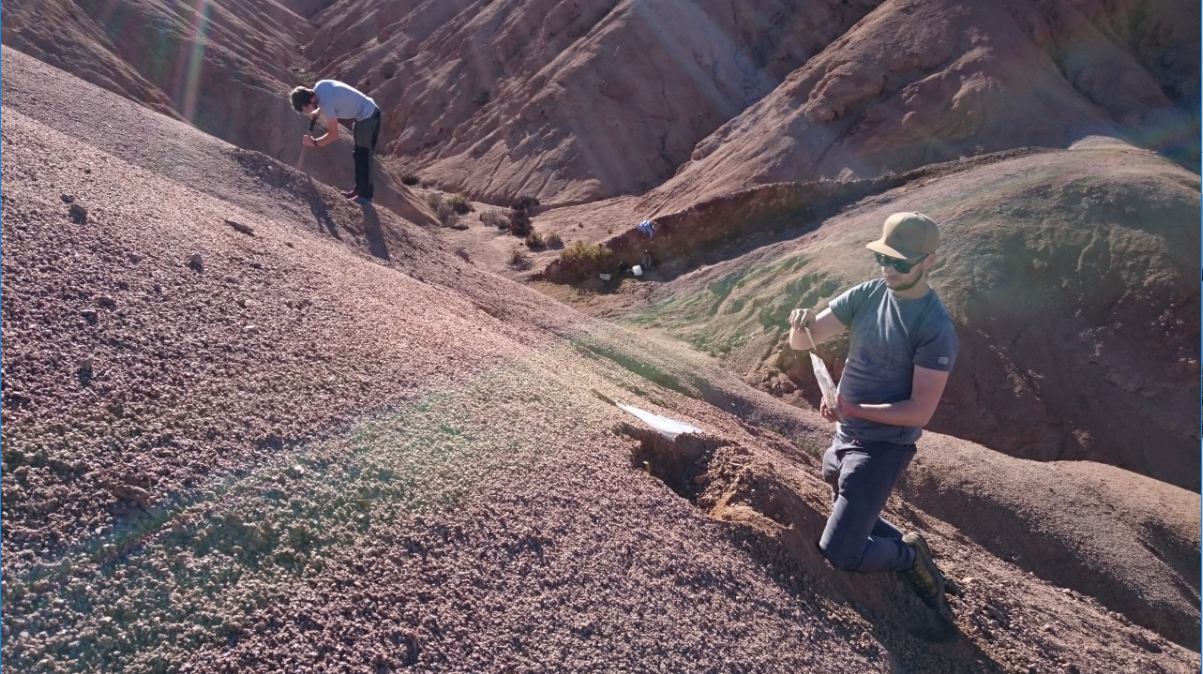DFG Funds Interdisciplinary Top-Level Research on the Formation of the Earth's Surface in South America
22 April marked International Earth Day – a good occasion to introduce the EarthShape project, one of the most innovative projects funded by the DFG in South America
(06.05.19) "It's useless for men to win the Moon if they lose the Earth." This famous quote by Noble Prizewinner for Literature François Mauriac reminds us of the increasingly urgent need to bring the progress of the present into alignment with sustainable development and appreciation for our planet Earth.
International Earth Day was established to mark what was at the time the largest oil spill in the history of the United States. Images of marine animals on the Californian coast covered in a coat of black, viscous oil made their way around the world in February 1969, making headlines in the most important international daily newspapers. The oil disaster in the Santa Barbara Channel was met with fierce public reaction. Many people in the USA attended street demonstrations organised by thousands of universities and schools to demand more effective environmental protection measures. In the same year as the disaster in the Santa Barbara Channel, the first human landed on the Moon. And yet back down on Earth we were still light years away from showing a reasonable understanding towards our own planet.
Forty years later, in 2009, the General Assembly of the United Nations established 22 April as International Earth Day, since "promoting harmony with nature and the Earth is key to striking a balance between the economic, social and ecological needs of current and future generations" (Resolution A/RES/63/278).
The EarthShape project

The primary terrain where research is being conducted is Cordillera de la Costa in Chile
© Earthshape
In keeping with the principle of sustainable development, the DFG is currently funding the EarthShape research project in Latin America. It is studying how microorganisms, animals and plants have influenced and continue to influence the form and development of the Earth's surface over time, from the distant geological past to the present.
EarthShape is enriching the debate surrounding the basic geoscientific paradigm that the Earth's surface is mainly shaped by climatic changes and tectonic movements with the concept that biological factors also play a part in shaping the Earth's surface. According to this concept, biotas influence the topography and alter the Earth's surface to such an extent that even climatic changes are possible. Even though little is still known, research into the biological effects on topographical changes would appear particularly relevant in the context of understanding how climatic changes alter the Earth's surface.
"We are studying how living beings affect the form and function of the Earth's surface as part of the project. In doing so, we can better predict how the Earth's surface will react to future changes in vegetation related to climate change and global warming," explains Prof. Dr. Todd Alan Ehlers from the University of Tübingen.
The primary terrain where the research is being conducted is Cordillera de la Costa in Chile, a mountain range with some of the most spectacular vegetation diversity on Earth. This region spans around 1,300 kilometres in a North-South direction and is marked by considerable climate variability, ranging from very dry to humid temperate areas. The special conditions in the region provide researchers with a sort of natural laboratory where they can determine how biota and topography interact. The latitudinal variation of the research area facilitates the study of the biota changes triggered by anticipated global climate change and their effects on landscape formation using a certain area and time frame. The work area is concentrated in the non-Andean part of Chile. The glacial landscape was not included on account of its complexity.
EarthShape is interdisciplinary in nature, bringing together the fields of geosciences, ecology, soil science, hydrology, microbiology and geography. Another innovative aspect of this project is the integration of biosciences and geosciences which work on different time scales. The consideration of geomorphic processes is also a unique feature of the project.
"Considering the interdisciplinary nature of EarthShape, we are operating in unknown scientific territory, with the result that this project presents both a great challenge and a unique opportunity to shape a new field of knowledge," explains Prof. Dr. Friedhelm von Blanckenburg from the German Research Centre for Geosciences (GFZ-Potsdam).
Preliminary results

EarthShape is interdisciplinary in nature, bringing together the fields of geosciences, ecology, soil science, hydrology, microbiology and geography
© Earthshpe
Todd Alan Ehlers from the Faculty of Geosciences at the University of Tübingen and Friedhelm von Blanckenburg from the German Research Centre for Geosciences of the Helmholtz Centre Potsdam (GFZ) are coordinating the initiative jointly. The project is being funded as part of the Priority Programme of the DFG, a funding line for projects that are highly original and innovative which are developed by a cross-regional network of researchers from different research institutions and require cooperation between a wide variety of disciplines. The project will last for six years and funding amounts to a total of €10.2 million, divided into two funding periods.
In the first three years, 16 specialist articles, 20 doctoral dissertations, twelve master's theses and ten bachelor's theses have already emerged from the project. The large amount of data collected has also been disseminated and discussed in 15 workshops and meetings.
Some 60 German and 20 Chilean researchers are involved in the EarthShape Priority Programme, which was established in 2016. The South American researchers are benefiting from this project in a number of ways. They are attracting investment, generating knowledge about their own country, developing and strengthening international cooperation and relying on cutting-edge technology in research. The input of the Chilean researchers and their knowledge of the region is of vital importance to the German project team.
The project is an example of how internationalisation has become an integral part of research. "The DFG fully endorses international cooperation given that a variety of interesting scientific phenomena are occurring globally and, for example, changes to the Earth's surface caused by climate change do not recognise national borders. The study of these processes also calls for global efforts and cooperation between researchers from different countries," explains Dr. Kathrin Winkler, Head of the DFG Office Latin America.